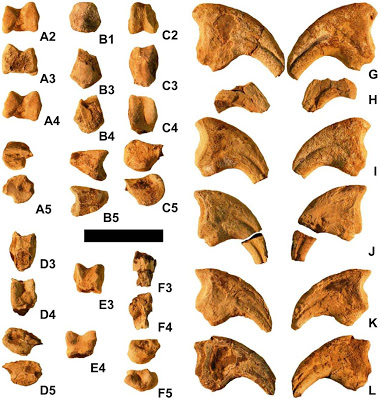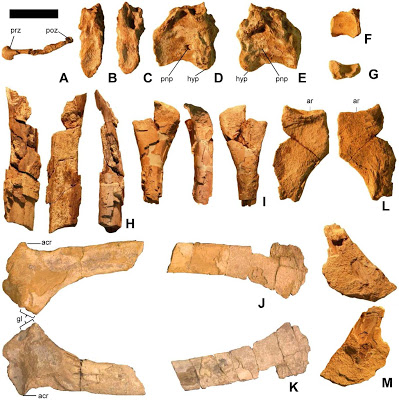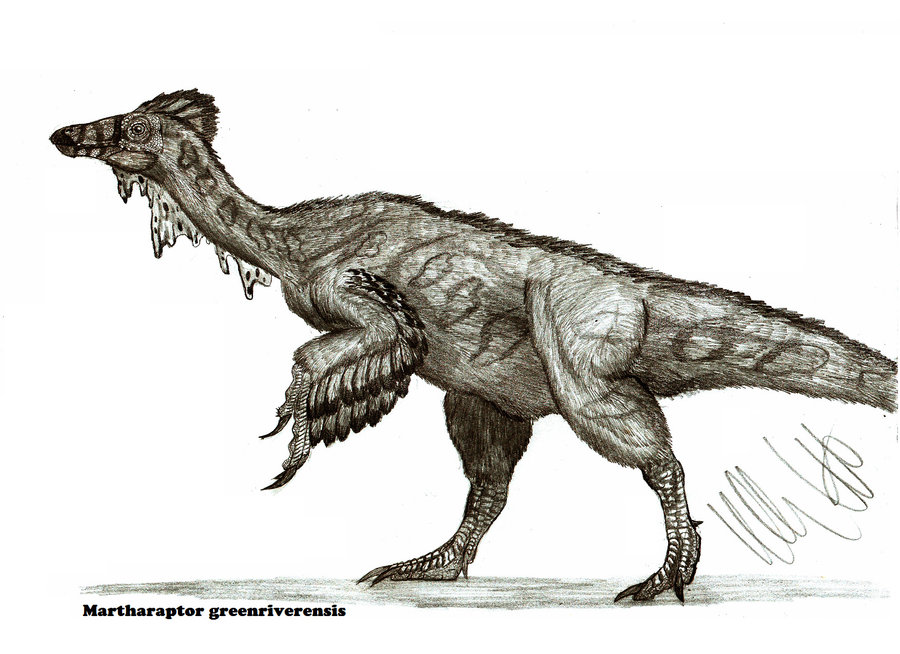Citation:Senter P, Kirkland JI, DeBlieux DD (2012) Martharaptor greenriverensis, a New Theropod Dinosaur from the Lower Cretaceous of Utah. PLoS ONE 7(8): e43911. doi:10.1371/journal.pone.0043911Editor: Peter Dodson, University of Pennsylvania, United States of America
In a paper published in the journal PLoS One on 29 August 2012, Phil Senter of the Department of Biological Sciences at Fayetteville State University and James Kirkland and Donald DeBlieux of the Utah Geological Survey describe a new species of Therizinosaur from the Early Cretaceous Cedar Mountain Formation of western Utah.

Manual bones of Martharaptor greenriverensis. (A)–Presumed metacarpal I. (B)–Presumed phalanx I-1. (C)– Penultimate phalanx. (D) Penultimate phalanx. (E)–Unidentified phalanx. (F)–Unidentified phalanx. (G)–Ungual of digit I. (H)–Ungual of digit I. (I)– Ungual of digit II. (J)–Ungual of digit II. (K)–Ungual of digit III. (L)–Ungual of digit III. Scale bar = 50 mm. Numbers on sub-figures refer to proximal (1), distal (2), dorsal (3), palmar (4), and side (5) views; for side views, whether the side is medial or lateral cannot be determined. Senter et al. (2012).

Vertebrae, scapula, forelimb bones, and pelvic bones of Martharaptor greenriverensis. (A)–Partial cervical neural arch, dorsal view. (B–E)–Cranial dorsal centrum in cranial (B), caudal (C), right lateral (D), and left lateral (E) views. (F–G)–Distal caudal centrum in lateral (F) and ventral (G) views. (H)–Possible ulna. (I)–Possible radius. (J–K)–Left scapula in lateral (J) and medial (K) views. (L)–Proximal end of ischium. (M)–Possible distal end of pubis Scale bar = 50 mm. acr = acromium process, ar = acetabular rim, gl = glenoid, hyp = hypapophysis, poz = postzygapophysis, pnp = pneumatopore, prz = prezygapophysis. Senter et al. (2012).



 June 10th, 2016
June 10th, 2016  Riffin
Riffin 
 Posted in
Posted in  Tags:
Tags: 